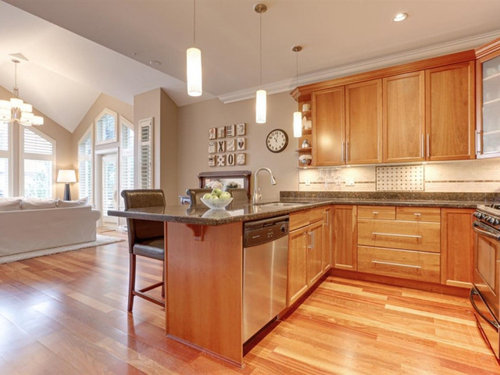
Picking the perfect floor color can feel overwhelming, but it doesn’t have to be. Choosing the right floor color is a crucial facet of interior design, setting the tone and impacting the overall feel of a room. The floor, often the largest surface in a room, significantly influences the atmosphere and functionality of your space. Are you struggling with choosing a floor color that complements your décor and lighting conditions? Do you worry about making a costly mistake that could leave you unhappy with the final look of your home? This thorough guide will walk you through the process of selecting the perfect floor color for any room, considering factors like lighting, room size, and desired aesthetic. We’ll cover various styles, practical tips, and inspiration to help you make an informed decision. Get ready to transform your home with the perfect shade!
Understanding the Impact of Floor Color
The Psychology of Color
The color of your floor significantly influences the mood and atmosphere of a room. Warm colors like reds and browns tend to create a cozy and inviting atmosphere, whereas cool colors like blues and greens offer a sense of calmness and spaciousness. Consider the intended use of the room. A kitchen might benefit from warmer, more grounding tones, while a bedroom might be better suited to cooler, more restful shades.
Light and Color Interaction
Natural light plays a critical function in how a floor color appears. Darker colors absorb light, making a room feel smaller and cozier. This effect is desirable in large, high-ceilinged rooms but might feel oppressive in smaller spaces. Lighter colors, conversely, reflect light, making rooms appear brighter and more expansive. North-facing rooms, receiving less direct sunlight, benefit from lighter floor colors to enhance brightness. South-facing rooms, with abundant sunlight, can handle darker colors without becoming too dark.
Room Size and Floor Color
The size of your room is another key factor to consider. In smaller rooms, lighter floor colors can make the space feel larger and more open. Darker colors, while adding drama and sophistication, can make a small room feel cramped and claustrophobic. Larger rooms, on the other hand, can tolerate darker floor colors without compromising the sense of spaciousness. You could even use area rugs to introduce darker colors strategically in larger rooms.
Related Post : The Best Flooring Choices for Open-Concept Spaces
Style and Decor
Your existing décor and intended style should dictate the overall scheme. Modern minimalist designs often benefit from neutral, light-colored floors, providing a clean and uncluttered aesthetic. Traditional or rustic styles might pair well with darker, richer shades or wood tones for warmth and character. Always consider how the floor color will harmonize with the walls, furniture, and other design elements in the room.
Choosing the Right Floor Color for varied Rooms
Living Room Floor Colors
The living room serves as a central gathering space, demanding a floor color that balances style and practicality. Neutral colors like beige, gray, or taupe offer versatility and timeless appeal. Hardwood floors in warm browns add a touch of sophistication, while lighter wood tones offer a more contemporary feel. Consider using area rugs to introduce pops of color or texture, providing a layered look and enhancing the overall ambiance.
Kitchen Floor Colors
Kitchen floors endure significant wear and tear; therefore, durability is paramount. For high-traffic areas, consider durable materials like ceramic tile, porcelain, or luxury vinyl plank. Lighter colors can help hide dirt and grime, making maintenance easier. However, darker colors can add drama and personality. A balance should be struck between practicality and aesthetics, prioritizing a color that complements the overall kitchen design.
Bedroom Floor Color
The bedroom is a space for relaxation and tranquility. Choosing a calming and soothing color is key. Soft grays, muted blues, or warm beige create a sense of peacefulness. Avoid overly vibrant colors that may be stimulating and disrupt sleep. Carpet offers warmth and comfort underfoot, but also needs to be durable, stain resistant and easy to maintain.
Bathroom Floor Color
Bathrooms require moisture resistance and easy cleaning. Ceramic tiles, porcelain tiles, or vinyl flooring are ideal choices for bathrooms. Lighter colors such as white, light gray, or pastel shades create a sense of spaciousness and cleanliness. Darker colors can add a touch of sophistication but may require more diligent cleaning to avoid showing dirt and water stains. Consider adding a rug to add texture and warmth.
Exploring varied Floor Materials and Their Color Options
Hardwood Floor Colors
Hardwood flooring offers timeless elegance and durability. A wide scope of color options exists, from light blonde to dark espresso. Light-colored hardwood floors create a bright, airy atmosphere, while darker hues offer a rich, luxurious feel. Consider the wood species, as varied woods have unique color variations and grain patterns. The finish also affects the final color, influencing the look and feel of the floor.
Tile Floor Colors
Ceramic and porcelain tiles offer versatility, durability, and easy maintenance. A vast array of colors, patterns, and textures are available, allowing for customization. Consider the size and shape of the tiles, as they influence the visual effect on the floor. Larger tiles create a clean and modern look, while smaller tiles can add visual interest and texture.
Carpet Floor Colors
Carpet offers comfort, warmth, and sound insulation. A wide spectrum of colors and textures are available, from solid hues to patterned designs. Light-colored carpets brighten rooms, while darker carpets add depth and drama. However, light-colored carpets show dirt more easily, while dark carpets can make rooms feel smaller. Consider the fiber type, pile height, and stain resistance when choosing a carpet.
Incorporating Trends and Personal Style
Current Floor Color Trends
Current trends favor both neutrals and bold statements. Soft greys, warm beiges, and light browns remain popular choices for their versatility and timeless appeal. However, darker colors and richer tones are also gaining traction, adding depth and drama to spaces. Metallic accents and textured surfaces are also popular design elements, offering unique visual interest.
Finding Your Personal Style
Your personal style should guide your color selection. Consider your existing décor, furniture, and overall aesthetic. If you prefer a minimalist aesthetic, neutral colors are a safe bet. For a more eclectic style, incorporate vibrant colors and patterns for a bold statement. Browse design magazines, websites, and social media for inspiration to help shape your preferences.
Combining varied Floor Colors
Combining varied floor colors, perhaps using area rugs or contrasting floor materials, offers a layered look and visual interest. This can be particularly effective in open-plan spaces or multi-functional rooms where you may wish to designate varied areas with varied colors or textures. Experimentation is key, but ensure that the chosen colors complement each other for a cohesive and stylish look.
Getting Professional Advice
Don’t hesitate to seek professional guidance from interior designers or flooring specialists. They can offer valuable insights, personalized recommendations, and expert advice based on your specific needs and preferences. A consultation can save time and money, avoiding costly mistakes and ensuring that the chosen floor color meets your expectations and enhances your home’s aesthetic.
Practical Tips for Choosing and Maintaining Your Floor Color
Testing Floor Color Samples
Before committing to a floor color, it’s crucial to test samples in the actual room. Observe how the color appears under varied lighting conditions—natural and artificial—throughout the day. This will help you gauge the true color and its impact on the overall ambiance.
Considering the Long-Term Impact
Your floor color is a long-term investment. select a shade that you’ll enjoy for years to come, avoiding fleeting trends that you might tire of quickly. Neutral colors are typically the safest option for longevity and resale value.
Regular Maintenance and Cleaning
Maintaining the appearance of your floor depends heavily on the materials chosen and its color. Darker colors tend to show dirt and scuffs more readily, requiring more frequent cleaning. Learn about the specific cleaning requirements for your floor type to preserve its appearance and ensure its longevity.
Choosing the perfect floor color is a pivotal decision in interior design, impacting the overall mood and functionality of your space. Remember to consider your lifestyle, personal preferences, and the existing décor when making your selection. By carefully weighing the factors discussed—light, room size, and desired atmosphere—you can confidently create a beautiful and functional home. Don’t hesitate to experiment with samples and consult with design professionals if needed. Ultimately, the perfect floor color is the one that makes you feel happy and comfortable in your own home. Start your floor color journey today!
